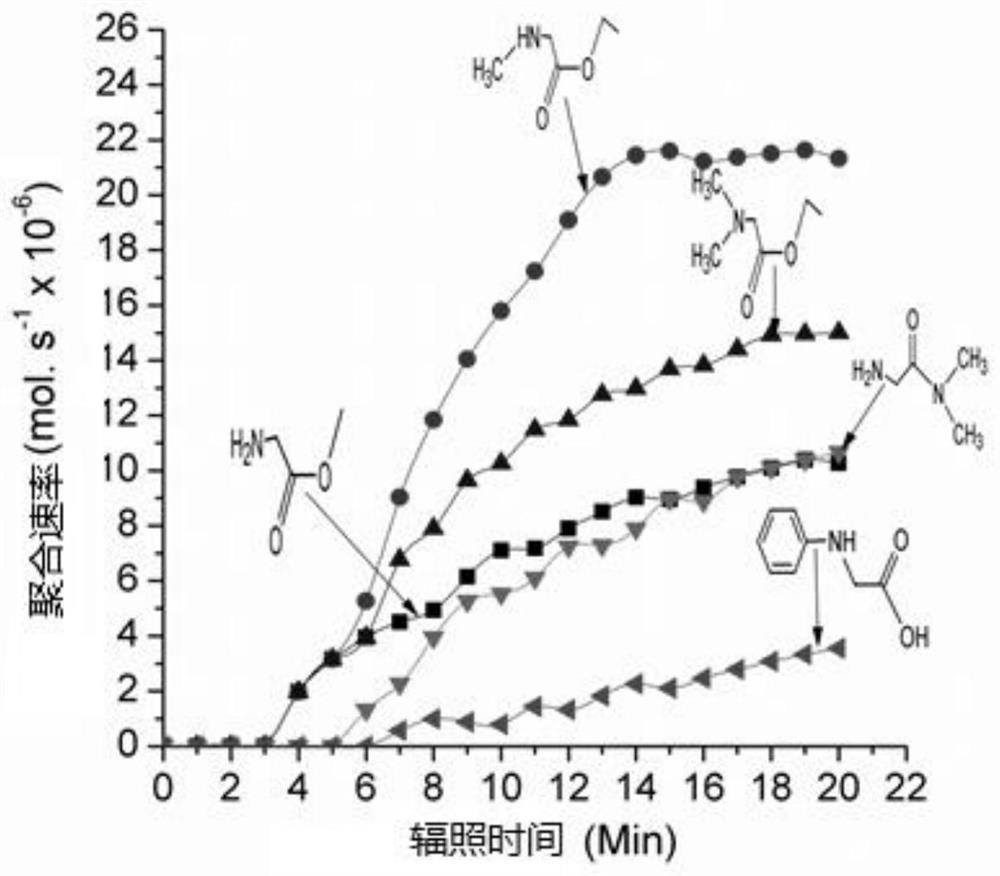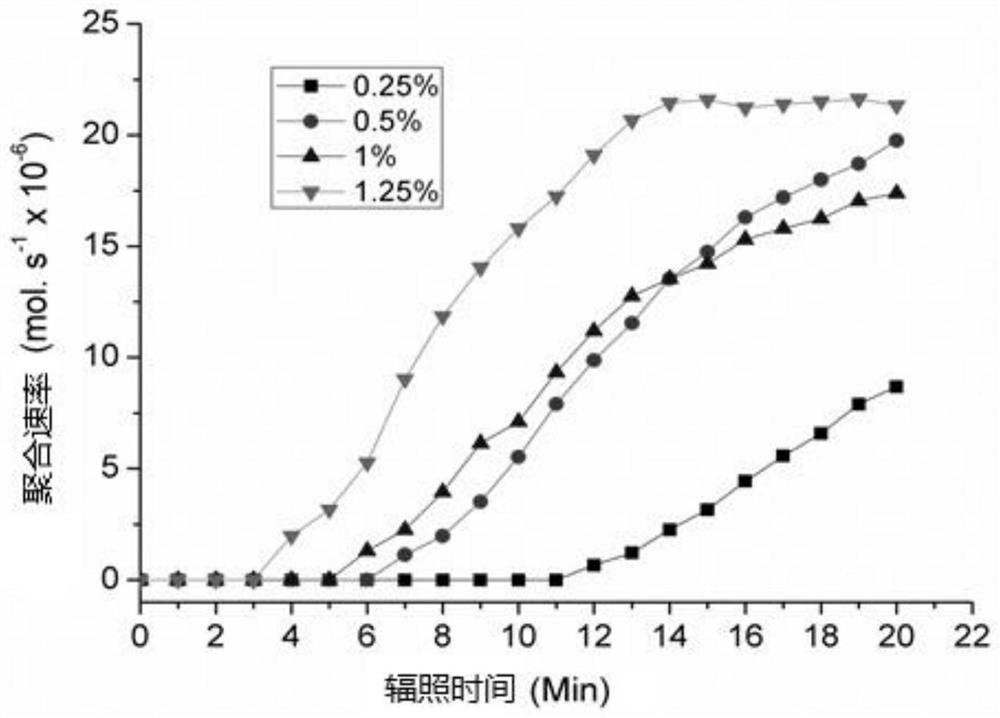Radical Photopolymerization Initiating System Based on Amino Acid Derivatives and Method for Initiating Free Radical Photopolymerization
A technology of photopolymerization initiation and free radicals, which is applied in the field of photopolymerization initiation system, can solve the problems of low efficiency of L-arginine and silk fibroin peptide co-initiation, high efficiency of sulfur-containing amino acids, and unstable oxidation performance. Achieve excellent biocompatibility, high photoinitiation efficiency, and good biocompatibility
- Summary
- Abstract
- Description
- Claims
- Application Information
AI Technical Summary
Problems solved by technology
Method used
Image
Examples
Embodiment 1
[0041] A kind of radical photopolymerization initiation system, its each component is as follows:
[0042] The first component: Camphorquinone 0.5%
[0043] The second component: glycine methyl ester 0.5%
[0044] The visible light initiating system is prepared according to the above-mentioned proportion, and the weight of the water-soluble photopolymerization system is 100%. Add the visible light triggering system to the aqueous solution containing 75% hydroxyethyl acrylate and mix well, adjust the pH values to 4, 5, 6, 7, and 8 with 10% sodium hydroxide solution respectively, and obtain five kinds of transparent and clear light The polymerization reaction liquid is used for photopolymerization performance test.
[0045] Photopolymerization reaction: The prepared photocuring reaction solution is placed in a capillary dilatometer and irradiated under a 150W metal halide lamp for 10Min with a light intensity of about 20mW / cm 2 . The height of the drop of the liquid level ...
Embodiment 2
[0047] A kind of radical photopolymerization initiation system, its each component is as follows:
[0048] The first component: Camphorquinone 0.5%
[0049] The second component: N-methylglycine ethyl ester 0.5%
[0050] The visible light initiating system is prepared according to the above-mentioned proportion, and the weight of the water-soluble photopolymerization system is 100%. Add the visible light triggering system to the aqueous solution containing 75% hydroxyethyl acrylate and mix well, adjust the pH values to 4, 5, 6, 7, and 8 with 10% sodium hydroxide solution respectively, and obtain five kinds of transparent and clear light The polymerization reaction liquid is used for photopolymerization performance test.
[0051] Photopolymerization reaction: The prepared photocuring reaction solution is placed in a capillary dilatometer and irradiated under a 150W metal halide lamp for 10Min with a light intensity of about 20mW / cm 2 . The height of the drop of the liquid...
Embodiment 3
[0053] A kind of radical photopolymerization initiation system, its each component is as follows:
[0054] The first component: Camphorquinone 0.5%
[0055] The second component: N,N-Dimethylglycine ethyl ester 0.5%
[0056] The visible light initiating system is prepared according to the above-mentioned proportion, and the weight of the water-soluble photopolymerization system is 100%. Add the visible light triggering system to the aqueous solution containing 75% hydroxyethyl acrylate and mix well, adjust the pH values to 4, 5, 6, 7, and 8 with 10% sodium hydroxide solution respectively, and obtain five kinds of transparent and clear light The polymerization reaction liquid is used for photopolymerization performance test.
[0057] Photopolymerization reaction: The prepared photocuring reaction solution is placed in a capillary dilatometer and irradiated under a 150W metal halide lamp for 10Min with a light intensity of about 20mW / cm 2 . The height of the drop of the li...
PUM
 Login to View More
Login to View More Abstract
Description
Claims
Application Information
 Login to View More
Login to View More - R&D
- Intellectual Property
- Life Sciences
- Materials
- Tech Scout
- Unparalleled Data Quality
- Higher Quality Content
- 60% Fewer Hallucinations
Browse by: Latest US Patents, China's latest patents, Technical Efficacy Thesaurus, Application Domain, Technology Topic, Popular Technical Reports.
© 2025 PatSnap. All rights reserved.Legal|Privacy policy|Modern Slavery Act Transparency Statement|Sitemap|About US| Contact US: help@patsnap.com



